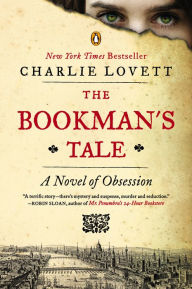Hazel Gaynor is a freelance writer and author whose work has appeared throughout the media in Ireland and the United Kingdom. She is a features writer for the national Irish writing website Writing.ie and she also writes a popular guest blog, "Carry on Writing." She received the 2012 Cecil Day Lewis Literary Bursary Award for emerging writers. Originally from Yorkshire, England, Hazel now lives in Ireland with her husband, two young children, and an accident-prone cat.
The Girl Who Came Home: A Novel of the Titanic
by Hazel Gaynor
Paperback
- ISBN-13: 9780062316868
- Publisher: HarperCollins Publishers
- Publication date: 04/01/2014
- Pages: 384
- Sales rank: 29,447
- Product dimensions: 5.20(w) x 7.90(h) x 1.00(d)
Choose Expedited Delivery at checkout for delivery by. Monday, December 2
A voyage across the ocean becomes the odyssey of a lifetime for a young Irish woman. . . .
Ireland, 1912 . . .
Fourteen members of a small village set sail on RMS Titanic, hoping to find a better life in America. For seventeen-year-old Maggie Murphy, the journey is bittersweet. Though her future lies in an unknown new place, her heart remains in Ireland with Séamus, the sweetheart she left behind. When disaster strikes, Maggie is one of the few passengers in steerage to survive. Waking up alone in a New York hospital, she vows never to speak of the terror and panic of that fateful night again.
Chicago, 1982 . . .
Adrift after the death of her father, Grace Butler struggles to decide what comes next. When her great-grandmother Maggie shares the painful secret about Titanic that she's harbored for almost a lifetime, the revelation gives Grace new direction—and leads both her and Maggie to unexpected reunions with those they thought lost long ago.
Inspired by true events, The Girl Who Came Home poignantly blends fact and fiction to explore the Titanic tragedy's impact and its lasting repercussions on survivors and their descendants.
Customers Who Bought This Item Also Bought
-
- The Cottingley Secret: A Novel
- by Hazel Gaynor
-
- The Girl from The Savoy: A…
- by Hazel Gaynor
-
- The Orchid House
- by Lucinda Riley
-
- Flight of the Sparrow: A Novel…
- by Amy Belding Brown
-
- The Painted Girls: A Novel
- by Cathy Marie Buchanan
-
- Under the Wide and Starry Sky
- by Nancy Horan
-
- The Girl on the Cliff
- by Lucinda Riley
-
- The Bookman's Tale: A…
- by Charlie Lovett
-
- The Midnight Witch
- by Paula Brackston
-
- The Gilded Hour
- by Sara Donati
-
- Wars of the Roses: Stormbird
- by Conn Iggulden
-
- The Twelve-Mile Straight
- by Eleanor Henderson
-
- The Tea Planter's Wife: A…
- by Dinah Jefferies
-
- Bittersweet
- by Colleen McCullough
-
- The Midwife of Hope River…
- by Patricia Harman
-
- Somewhere in France: A Novel…
- by Jennifer Robson
-
- The Winter Witch
- by Paula Brackston
Recently Viewed
The fictionalized saga of 14 Irish immigrants from a single parish who sailed on the Titanic. The year is 1982. Maggie, 87, has never discussed the voyage with any of her descendants, including her great-granddaughter Grace, a journalism student at Chicago's Northwestern University. Grace has been offered an internship at the Tribune—if she can pitch an original angle for a feature story. But when her father dies unexpectedly, she drops out of Northwestern to assist her mother, who has multiple sclerosis, also leaving her boyfriend, Jimmy. Two years later, Maggie jolts Grace back on the career path by deciding to finally come clean about her experience as one of the few third-class passengers who survived the Titanic. The historical sections cannot help but pull focus from the heartwarming frame story. A pastiche of journal entries, letters, telegrams and other archival material, some real, some convincingly faux, relates how 14 parishioners from the village of Ballysheen, County Mayo, decide to emigrate. Once aboard the revolutionary new ocean liner, Maggie and her giggly teenage girlfriends charm Harry, a Liverpudlian third-class steward, who devotes himself to making their passage pleasant. He helps Maggie send a "Marconigram" from the ship to Séamus, the love she left behind. Unfortunately, a certain iceberg intervenes. Her transmission is interrupted, altering its meaning. Harry manages to get Maggie on the last lifeboat; 12 of her fellow travelers are not so lucky. Gaynor wisely avoids the usual Titanic tropes (Astors and Strauses are scarcely mentioned), imagining the recollections of ordinary passengers and of the people anxiously awaiting news of them. Once Grace's article goes the 1982 equivalent of viral, the parallel stories wrap up a bit too neatly, especially in the romance department. Still, as the disaster's 102nd anniversary approaches, Gaynor's account surpasses, in subtlety if not in scope, so many flashier treatments.

















